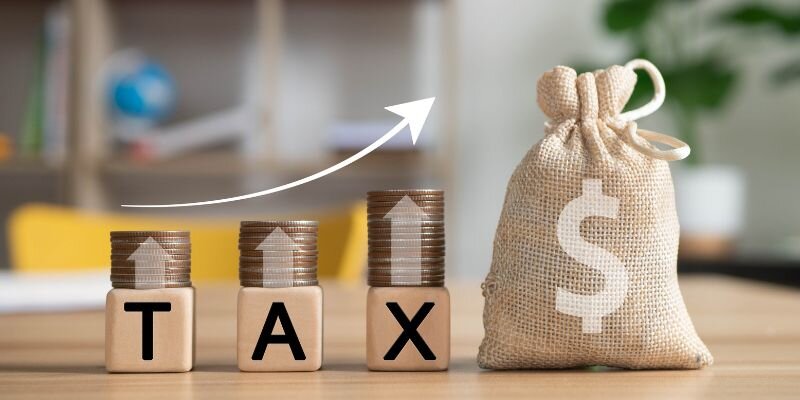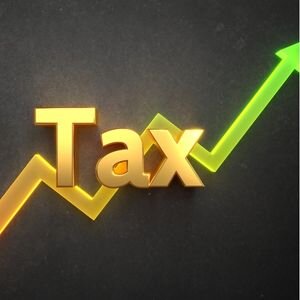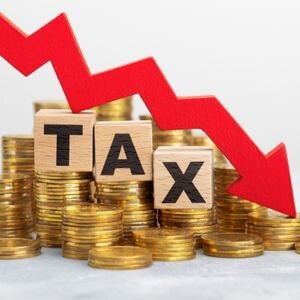
For the first time in over ten years, Plano, TX, is experiencing a significant rise in its property tax rate, a move that has caught the attention of residents and stakeholders alike. This unprecedented increase is set to impact homeowners, investors, and potential buyers, reshaping financial strategies and local real estate dynamics. Understanding the reasons for this decision and possible implications is crucial for anyone involved in the Plano property market. As the city adapts to this new fiscal landscape, staying informed will be key to navigating the changes effectively.
Understanding Plano’s Recent Tax Increase

The recent increase in Plano’s property rate has sparked widespread discussion, especially with its first uptick in over a decade. Understanding this shift requires an examination of the historical context and key factors leading to the decision. Residents and property owners can gain better insights into the current changes by looking at past tax rates and analyzing present-day motivations. This exploration will cover the historical backdrop of Plano’s tax rate, Plano’s dive into the reasons behind the increase, and offer a comprehensive view of this significant development in the city’s landscape.
Historical Context of Plano’s Tax Rate
Plano’s history is a tale of stability and restraint in a state where tax concerns often lead discussions. Historically, the city’s tax system has been relatively stable, balancing fiscal responsibility and growing community needs. This stability has been a hallmark of the city’s management, enabling Plano to thrive economically without burdening its residents. Over the past decade, residents have benefited from a consistent property tax rate, contributing to the city’s new and long-time residents.
In the past, Plano’s tax rates were carefully set to account for differences in property values while still making sure that vital services had enough money. Keeping track of tax money and city costs made the economy better, which led to growth. The city’s policies were very important; they periodically changed values to reflect changes in the market without causing sudden price increases. This focus on history has given the community a sense of trust and stability.
In the past, the city relied on other sources of income, like sales taxes and investments in the economy, to help balance its budget. By using this method, lower property tax rates were maintained. To keep service standard high without raising taxes, the municipal government had to deal with growing needs for infrastructure and more community services. So, understanding this progression is important for understanding why it was thought to be necessary to break the cycle of stasis, which led to the current rate change. It’s important to remember that keeping tax rates the same could have meant fewer services or deals that the city wanted to avoid.
Factors Behind the Current Increase
Plano’s choice to raise property taxes was based on a number of strong reasons, all of which stemmed from the need to keep up with city growth and service needs. Rapid population growth and development are the main factors that make the need for better facilities and public services even greater. Plano is one of the best cities in Texas, so it’s under more pressure to provide high-quality schools, emergency services, and community buildings, which will cost a lot of money.
Making changes to the tax rate is also a way to think about the long-term health of the economy. City planners try to make sure that budgets cover rising costs for things like maintaining roads and keeping people safe. The city is realizing more and more that relying only on past tax revenues is not enough to keep up the high standard of living that its people value. So, a planned rise was thought to be the best way to ensure long-term growth and service provision. For homeowners rethinking their financial strategies amid these changes, partnering with local experts who can help you sell your house fast for cash in Plano can be a practical move to stay ahead of shifting property expenses.
It’s also important to note the importance of Texas property appraisal areas. Because of changes in property prices, assessments have had to be recalculated, which has an effect on tax rates. The real estate market has been very active lately, as shown by the sharp rise in property prices. This change in property taxes makes sure that the city can get a fair amount of money from these rising values, which is what the budget calls for. Collins, a local economic strategist, says this is very important to make sure that Plano’s services keep getting the money they need without having to make huge budget changes that could hurt the community’s well-being.
Ultimately, the increase aims to balance the fiscal equation required to meet Plano’s needs while providing an attractive living environment for its residents. By addressing these factors, Plano seeks to chart a path of continued success, aligning tax strategies with the overarching goal of community enhancement. This necessity for thoughtful fiscal maneuvering underscores why the city ultimately opted for this tax rate adjustment, marking a new era of economic strategy to preserve Plano’s prosperity for years.
Impact on Homeowners in Plano
Since their property taxes went up recently, Plano homeowners now have to face new financial realities and make changes. Residents who want to know how this change will affect their home finances need to figure out their new tax burden. At the same time, homeowners need to be able to access tools and help to make sure they can handle these changes well. Plano’s efforts to balance the needs for growth with the desire to keep it a desirable place to live require residents to stay educated and take action on their tax duties. If you’re planning to sell your property and want to understand how our process works, you can explore an easier and faster way to navigate the Plano housing market.
Calculating Your New Tax Burden
The first step for homeowners to assess the impact of Plano’s rate increase is to understand how it affects their finances. Calculating your new tax burden can help you budget and plan for future expenses, as the property tax constitutes a significant portion of household expenditures. Homeowners must look at their property value assessments to get a precise picture of the increased rates for their situations. Beginning with a tax calculator can simplify this process, allowing for a tailored analysis of your new tax obligations. Residents can forecast their annual tax payments under the new framework by inputting the updated property rates into a reliable tax calculator, thereby avoiding unexpected costs.
Understanding the various components contributing to the tax amount, including the home’s valuation and the specific tax rate the city applies, is essential. With property values surging in Texas’s dynamic real estate market, having an accurate read on current appraisals is crucial. The recent adjustments in the city’s tax system reflect these elevated property values, highlighting the importance of keeping up with property assessments supplied by appraisal districts. Residents can regularly check for assessment changes by engaging with the taxpayer portal, ensuring they stay informed and verify that their valuation aligns with current market conditions.
Also, knowing the average tax rates for homes like yours in the area might help you figure out if your property taxes are acceptable. By looking at these factors, homeowners may make smart choices about how to spend their money, whether it’s on taxes or on ways to fight unfair assessments. Taking a proactive approach to figuring out the new tax burden gives homeowners the information they need to handle their money with confidence when tax laws change.
Resources and Support for Affected Residents
Navigating the implications of a new property tax rate can be daunting, especially as homeowners strive to adjust to the financial changes brought about by increased taxes. Fortunately, numerous resources and support systems are available to help residents in Plano manage these changes effectively. One of the foremost resources is the city’s tax department, where residents can access updated information on tax rates, payment schedules, and any available exemptions for which they might qualify. Understanding these details can offer significant financial relief and maintain manageable budgets over time.
Community groups and local governments often hold workshops and information events to help homeowners figure out how to deal with the new tax laws. These meetings are especially helpful for people whose tax bills have gone up for the first time. People who go can find out about possible tax breaks and relief programs for seniors, soldiers, and low-income families, among others. Homeowners can learn how to best handle their tax obligations and find ways to save money by taking advantage of these training opportunities. In nearby communities, working with a company that buys homes in Princeton can also offer relief for residents seeking quicker options to adjust their living situations during financial transitions.
Furthermore, consulting financial planners or tax advisors can be invaluable. These professionals can offer personalized advice that reflects individuals’ circumstances and assist in crafting strategies to mitigate the new tax impact. From reassessing budgets to planning annual tax payments, expert guidance ensures residents are not merely reactive but strategically equipped to navigate the new tax landscape.
In addition to one-on-one help, internet forums and community groups give people a chance to share their thoughts and experiences. This kind of networking can help people understand each other better and give them useful answers that other people have used successfully. Even though the tax increase is a change, Plano residents have the tools and support they need to face these problems head-on, stay financially stable, and enjoy living in a place that is growing and changing.
Local Opinions and Reactions
The property tax rate hike in Plano, Texas, has evoked a range of reactions from residents, highlighting differing perspectives within the community. With Collin County at the center of this change, varied feedback reflects concerns and support, focusing on fiscal responsibility versus financial burden. Meanwhile, the perspectives of local ISDs offer insights into how these changes might influence educational funding and priorities. These opinions underscore the complex dynamics of implementing tax changes in a rapidly growing city.
| Community Perspectives | Transparency & Communication | Impact on Local ISDs |
|---|---|---|
| Concerns over affordability and displacement | Calls for more detailed explanations from city officials | Mixed opinions on the necessity of rate increase |
| Support for improved infrastructure and services | Desire for open forums and town hall meetings | Pressure to maintain quality education despite budget constraints |
| Worry about the long-term economic impact | Need for regular updates and clear financial accountability | Emphasis on resource allocation efficiency |
| Worry about the long-term economic impact | Importance of transparent decision-making processes | Challenges in balancing fiscal responsibility with educational standards |
The table highlights the multifaceted responses to tax changes in Plano, reflecting community concerns and priorities alongside educational impacts.
Feedback from the Collin County Community
Initial feedback from the Collin County community reveals a tapestry of opinions regarding the recent property tax adjustments in Plano. Many residents express immediate concern over the increased burden, fearing strain on household budgets in a city with little change in rates over the past decade. Rising property values throughout Texas compound this sentiment, prompting some to worry about affordability and the potential for increased financial pressure. However, not all opinions stem from dissent. Some community members recognize the necessity of the tax increase to sustain city services and infrastructure. They argue that enhanced funding becomes essential as Plano grows, with development expanding and community needs evolving. This perspective is particularly pronounced among those who have witnessed the positive impacts of tax-supported projects in public amenities and safety services.
Furthermore, local government bodies call for transparency and accountability regarding how the new tax revenue will be allocated. Residents urge city officials to delineate clear plans for addressing infrastructure needs, such as road maintenance and school expansions, to reassure taxpayers that their contributions will be used effectively. The city of Plano has responded with promises of detailed reports and public discussions to involve the community in decision-making processes, seeking to build trust and mitigate concerns about tax increases.
Social media platforms and local forums have become hubs for discussion, allowing residents to share experiences and mobilize collective viewpoints. This digital engagement reflects a community eager to remain informed and involved in their city’s finances. Importantly, these dialogues frequently emphasize the role of civic participation in shaping policies that respond to current and future demands. While varied, feedback from the Collin County community underscores a common desire for prudent management of tax resources alongside a commitment to preserving Plano’s quality of life.
Perspectives of Local ISD on Tax Changes
Local ISDs’ points of view on Plano’s growth are very important since they show how it could affect school financing and priorities. School districts are a key part of the conversation about tax increases since property taxes make up a major part of their operating budgets. Teachers and administrators in Plano understand how hard it is to find a balance between making the required tax changes and keeping the neighborhood healthy. But they do show how more money may improve schools, which is good for all the students in Collin County.
Local educators argue that the additional revenue generated from the tax increase will enable them to address ongoing challenges such as classroom overcrowding and inadequate resources. By allocating funds toward constructing new schools and improving existing ones, ISDs aim to meet enrollment demands driven by Plano’s growth. Additionally, investments in technology and extracurricular programs are likely to receive a boost, aligning with the district’s comprehensive education that prepares students for various futures.
However, dissenters don’t share this perspective. A faction of teachers and parents expresses concern over the administrative allocation of new funds, fearing that bureaucratic priorities might overshadow students’ critical needs. They advocate for increased transparency and active participation in financial planning, ensuring that the impact of tax changes directly correlates with students’ success in the classroom. As ISDs engage in dialogues with city officials, they demonstrate fiscal responsibility and provide tangible benefits from raised taxes.
The ISDs’ increases in property tax rates in Plano illustrate an intricate balance between financial necessity and community expectations. While the perspectives convey optimism about enhanced educational prospects, they also remind taxpayers and academic authorities of the essential trust they need. By fostering open communication and transparent policy enactment, ISDs aim to uphold Plano’s standards and illustrate the positive outcomes that thoughtful tax management—and access to Expert Property Management Services in Plano, TX—can achieve within a growing urban environment.
Future Implications of Tax Adjustments

The recent property tax increase in Plano, Texas, marks the first such hike in over a decade, setting the stage for adjustment and potential transformation in the city. As residents and stakeholders glimpse the future, they explore what these tax adjustments mean for the local real estate market and long-term economic health. Exploring the ripple effects will teach us about shifts in property values and market dynamics that may redefine Plano’s investment landscape.
Long-Term Effects on Plano’s RePlano Market
The rise in property tax rates in Plano introduces a fresh set of dynamics for the local real estate market, likely altering investment strategies, property values, and demographic trends. First and foremost, the increased tax burden will inevitably affect property affordability for potential buyers and current homeowners. As these new rates take effect, individuals on tighter budgets may be priced out of the market, leading to a possible demographic shift. These effects could influence Plano’s potential to attract more affluent residents who can absorb the additional costs, consequently driving property values upward. For the real estate market, this change in what people can afford may lead to a chain reaction, making it necessary to rethink current prices and possibly slowing down sales for certain types of homes, especially those for first-time buyers.
The tax increase also influences investor behavior, as real estate investment firms rethink potential returns and strategies. Investors may pivot toward higher-value properties that promise greater margins even with elevated tax levels. Alternatively, some may diversify assets outside of Plano or seek innovative ways to maximize value through property enhancements or subdivision, should regulations permit. These strategic recalibrations from key players in the market can result in notable shifts in the types of developments or refurbishments seen throughout the city, potentially impacting Plano’s urban and property aesthetics in the long term.
Furthermore, the new tax environment presents both challenges and opportunities for the commercial real estate sector in Plano. Businesses within the city will likely reassess their financial models to accommodate increased operational costs from higher property taxes. This may spur a drive toward efficiency, with companies optimizing their spatial needs to manage expenses more effectively. Equally, the tax adjustment reinforces PlPlanoto’s robust economic hub and urban planning and infrastructure investments. Although initially driven by the need to justify higher taxes, these enhancements can potentially attract new industries and enterprises seeking city ecosystems that support growth and innovation.
Overall, the long-term effects on Plano’s market encompass a complex web of influences requiring strategic foresight and flexibility from all market participants. Ensuring the property market remains vibrant amid higher taxes will demand collaboration and creativity, spearheaded by proactive community engagement and governance. By crafting solutions tailored to emerging conditions and embracing the opportunities that tax-driven revenues present, Plano can continue to thrive as an appealing and sustainable destination for future generations. For more insights or personalized guidance on your Plano property options, don’t hesitate to reach out to House Buying Heros for expert advice.
Helpful Plano Blog Articles

